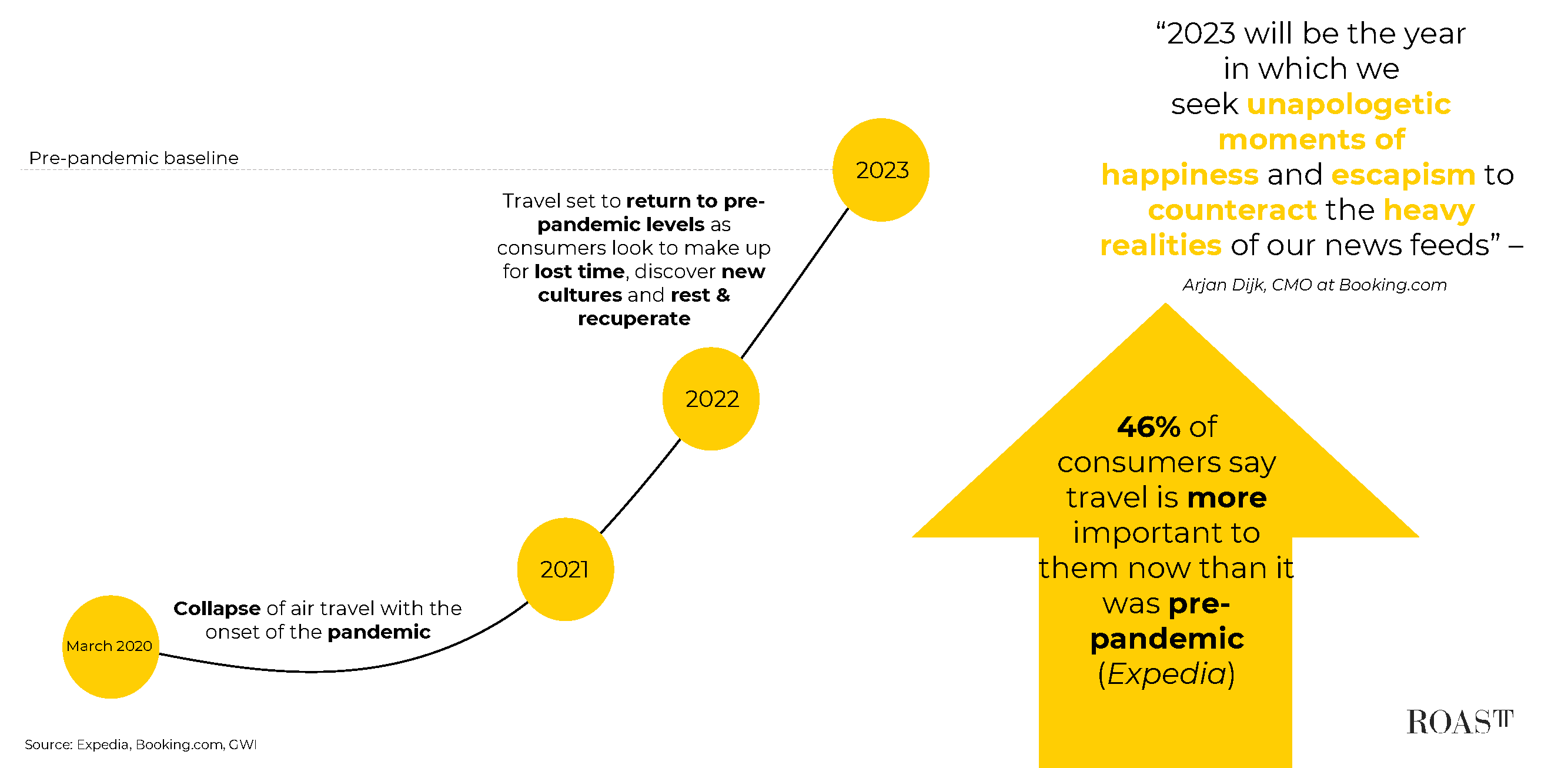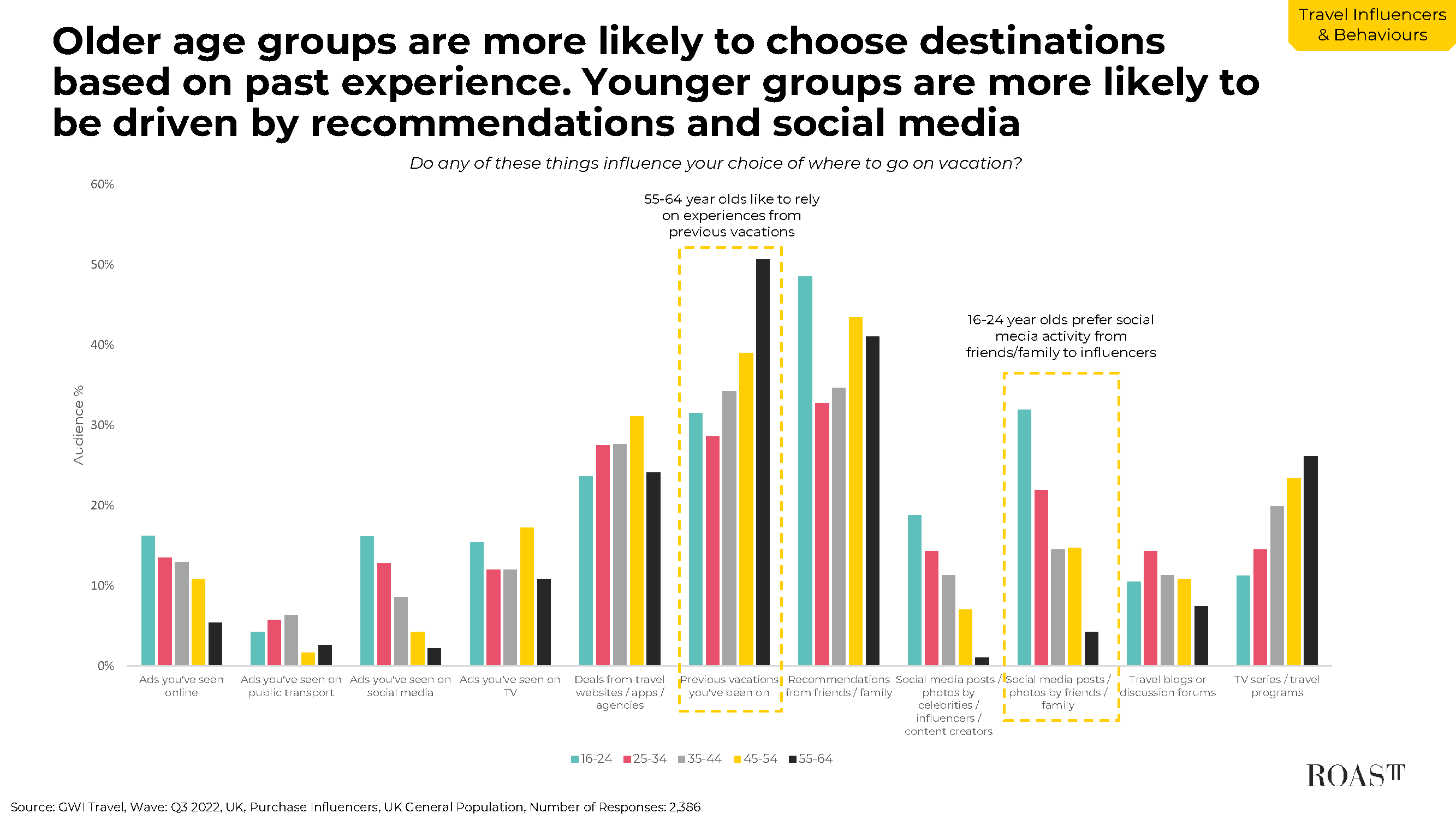
What’s in store for the travel sector in 2023?
The ROAST Insights team have done a deep-dive into what the travel sector is set to look like through 2023, unpicking consumer attitudes and purchase drivers, with the data suggesting that when it comes to holiday behaviours, 16-24’s and 55-64’s are not so different after all…
Travel is returning to pre-pandemic levels
After being arguably the most disrupted industry during the pandemic, travel is finally set to return to pre-pandemic levels in 2023 with airlines and providers feeling positive about the year ahead.
The pandemic was pivotal in shifting priorities and travel has well and truly repositioned itself as a priority area with many consumers now citing it as more important than pre-pandemic.
The current financial climate means that consumers are forced into a balancing act between making up for lost time while still protecting personal finances. Search trends surrounding ‘cheap’ and ‘all-inclusive’ holidays have emerged as breakout terms as consumers are keen to plan holidays with both a savvy approach and a clear picture of how much they will spend on their holidays.

Relaxation and enjoyment are priorities while sustainable travel is struggling
In general, consumers like to take a holiday abroad to enjoy themselves and relax, but different generations have varying reasons for going on holiday. 16-24’s are all about treating themselves while 35-44’s are after a sense of adventure as they’re likely to be wanting to escape the 9-to-5 lifestyle.
While finances are front-of-mind, consumers look to save money throughout the year. However, 18-24s and 55-64’s can be a bit more spontaneous as they often have fewer responsibilities.
Even though sustainable travel has become a point of discussion, 2023 is not set to be the year where it comes to the fore. Although consumers are showing concerns about sustainability and its relationship with travel, they are not ready to fully commit and start paying more for sustainable travel.
16-24s and 55-64s are more similar than you might expect
Despite the age disparity, these two groups have a number of similarities.
They are the two groups most likely to be influenced by travel books, perhaps fuelled by the success of resources such as the Lonely Planet guides. They are also the most likely groups to be influenced by conversations with friends or family.
These similarities may be driven by the relative time-wealth enjoyed by these two groups, who are less likely to be in the labour-intensive double-bind of working and parenting. Supporting this theory is the data point that shows that 35-44’s are the most likely to use travel agents, outsourcing the research process that other age groups relish.
16-24’s and 55-64’s share the luxury of time but diverge drastically on technology use, particularly when it comes to social media, with 24% of the younger group and only 4% of the younger group using it to research their holidays.

Using Insights to fuel Travel Marketing
The insights in our whitepaper suggest the varying importance and roles of media channels to different audiences and hint at the types of messaging and destinations that will resonate best, but the true value of research is only unlocked with bespoke pieces of work using more detailed personas.
Get in touch if you’re interested in understanding the what, why, when and how of travel booking for your specific audiences and we will help you unlock insights that feed directly into your marketing plans. Reach out to our Insights team here.
Download the full Whitepaper below
Where Next? Travel in 2023
"*" indicates required fields





